Rathlaheen House
Houses within 5km of this house
Displaying 23 houses.
Houses within 5km of Rathlaheen House
Displaying 23 houses.
| House name | Description | |
|---|---|---|
| Ieverstown | A house held by John A. Ievers in fee at the time of Griffith's Valuation when the building was valued at £11.10 shillings. Still inhabited it stands close to the road. | |
| Ballysheen | A house on the Vandeleur estate, occupied by the Walton family for most of the 19th century. Occupied by George Perry in 1814. Valued at £10 at the time of Griffith's Valuation it was renovated in the 20th century. Labelled as Walton Lodge on the 25-inch Ordnance Survey map of the 1890s. |
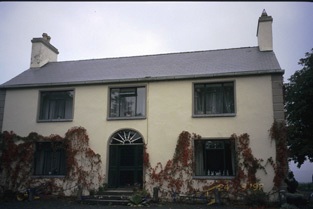
|
| Ballycunneen | Hogan writes that this house was built in 1805 by Thady, son of Thady O'Halloran the diarist, in front of the old Hickey house. Marked on the first Ordnance Survey map this house was occupied by Stephen O'Halloran who held the property from Colonel George Wyndham. It was valued at £15 and had 159 acre demesne. The house is still extant. | |
| Firgrove | Hogan writes that the building of Firgrove was begun by Thomas, son of Thady O'Halloran, the diarist, and completed by John MacMahon of Knockane. John Peter Kelly took over the house from MacMahon. In 1851 Eliza, daughter of John Scott of Firgrove, married George Fosbery of Clorane, county Limerick. The house was occupied by Charles Butler in the mid 19th century who held the property from John Kelly. It was valued at £35. The house was demolished in the 1920s. |

|
| Deerpark | Home of the Daltons for much of the 18th century. Occupied by Simon O'Donnell in 1814 and by Edward Maunsell (son of George of the Ballywilliam, county Limerick family) in 1837 and at the time of Griffith's Valuation, when it was valued at £30. Maunsell held the property from Matthew Canny. Inherited by Maunsell's fifth son Thomas. It was sold to Shannon Development in the 20th century. | |
| Rossmanagher House | A D'Esterre home, occupied by Lieutenant Colonel William O'Brien in 1837 and by Solomon Frost in the mid 19th century, when it was valued at £7. Historians and archaeologists believe that this building, some of which still survives, dates to the sixeenth or seventeenth century. | |
| Rossmanagher Cottage | The house in the townland of Newpark is named Rossmanagher Cottage on the first Ordnance Survey map. This was another D'Esterre home, occupied by Richard K. D'Esterre at the time of Griffith's Valuation, valued at £10 and held from Caleb Powell. The remains of a building are still extant at the site. | |
| Springfield | Weir writes that the Morice family probably built this house which was located on the Wood estate. It is recorded as the residence of Henry Wilson in 1814 and of F. Morice in 1837. Griffith's Valuation records that Francis Morice held the property from George A. Wood in the mid 19th century. The house was valued at £28. This house which was renovated is still inhabited. | |
| Carrigoran | An 18th century house the residence of the Fitzgerald family in the 18th and 19th centuries. Griffith's Valuation shows that the house was valued at £45 in the mid 19th century and that it was held by Sir Edward Fitzgerald from Matthew Rosengrave. An earlier house reputedly destroyed by fire in the late 18th century stood nearby. The house was bought by the Sisters of Charity of the Incarnate Word in the 1920s. The house was still in use in the 1940s but was demolished in the 1980s. |
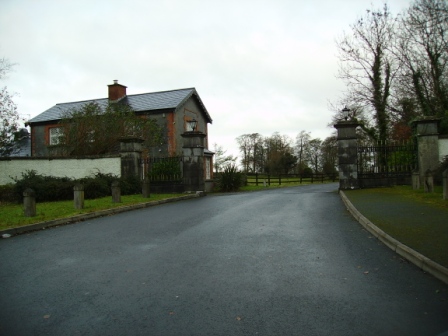
|
| Cappaghlodge | A property in the possession of the Spaight family from the early 18th century. The house named "Lodge" was the residence of Samuel Spaight in 1814. James Kelly held the property from the representatives of Edward Spaight Ferreter at the time of Griffith's Valuation, when the house was valued at £18. It was in the hands of the Court of Chancery at this time. In 1906 the house valued at £11 was in the possession of James Frost. Weir writes that the house is now demolished. | |
| Russell Villa | An early 19th century house built on the Dromoland estate, the home of the Russell family in the 19th and 20th centuries. The building is still extant. | |
| Clonmoney West | An early 18th century house, built and owned by the Westropps until the 20th century. The O'Donnells were resident at the end of the 18th century. It was leased to Henry White in 1814 and to D. Canny in 1837. Matthew Canny held Clonmoney from John Westropp in the mid 19th century, when the property was valued at £25. The Cannys subleased the property to Michael Macnamara. The executors of Macnamara's will advertised the sale of his interest in Clonmoney in January 1880. The original house is not extant now. |

|
| Woodpark | Weir records the marriage of Michael Dalton and Mary Anne Fitzgerald of Castlekeale in 1761. Woodpark was the residence of M. D'Alton in 1837 and of John Kennedy in the mid 1850s. The house was in ruins in the early 20th century. |

|
| Shannon Grove | Located on the estate of Sir Edward Fitzgerald this house was occupied by John Coffey at the time of Griffith's Valuation. The property was sold to the Hegarty family in the 1920s. It was labelled Shannon Grove on the 1st edition Ordnance Survey map but as Crow Hill on subsequent editions. A house and extensive farm are still extant at the site. | |
| Ballycaseymore | An 18th century house close to the entrance to Shannon Airport, it was the home of the Miller/Riggs Miller family. From 1814 it appears to have been leased to the Canny family, John Canny was in residence then and Matthew Canny at the time of Griffith's Valuation. The property was inherited by Thomas John Ryan of Tyrone House, county Tipperary in the 1880s and was sold in 1913. It is now a craft and design centre. |
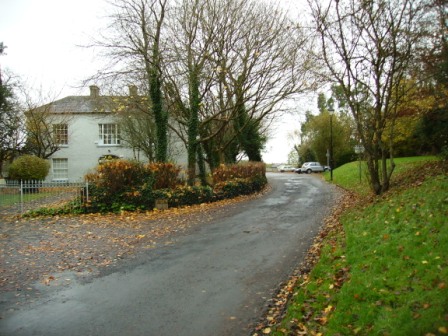
|
| Knockaun | The home of the McMahon family located on the Miller estate, they farmed 121 acres as a demesne. The residence of Patrick McMahon in 1814. Lewis records Knockhane as the residence of P. McMahon in 1837. The house was valued at £8 in the mid 19th century. | |
| Newmarket House | Home of a branch of the Studdert family in the 19th century. It was described by Lewis in 1837 as the "spacious mansion of C. Studdert". It was occupied by his widow Maria at the time of Griffith's Valuation. She held the property from Lord Inchiquin and it was valued at £25. Sold by the Studderts at the beginning of the 20th century. | |
| Ballycar | Home of the Colpoys family in the 18th and early 19th centuries. Wilson refers to it as the seat of Mr. Colpoys in 1786. It passed by marriage to the O'Callaghan family. The sale rental of 1850 describes Ballycar as a cottage style residence with 'a fine garden attached'. By the time of Griffith's Valuation the house was occupied by Edward Bennett who held the property from the Misses Abbott. At this time it was valued at £18. A house is still extant at the site. | |
| Fenloe House | A red brick two storey 18th century house, home of the Hickman family for the 18th and 19th centuries. Hugh Poole Hickman was the occupier in 1837 and at the time of Griffith's Valuation, when the house was valued at £28. He held the property from William Westby. |
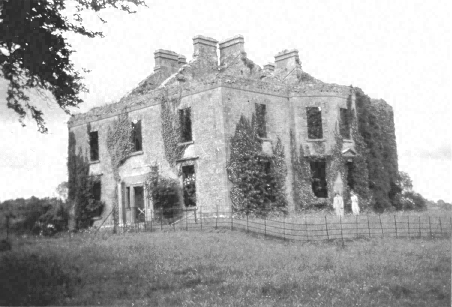
|
| Granaghan | The home of the Hewitt family on the Moloney estate. Mr Tim Donoghoe was the occupier in 1814 The old house is now largely demolished and a new house has been erected on the site. The house valued at £12 was held by Thomas Hewitt from Croasdaile Moloney in the mid 19th century. | |
| Knappogue Castle | A Macnamara castle until the early 19th century, it was sold to the Scotts of Cahircon in 1800. In the possession of William Scott by 1837. Lewis writes that the castle formerly belonged to the Macnamaras of Moyriesk and that it "is one of few ancient castles still inhabited". Weir writes that a ten bay residence was added to the tower house in the early 19th century. The sale rental of 1854 records George Sampson as tenant and that £8,000 had recently been spent on the building. By the mid 19th century Lord Dunboyne held the Castle valued at £36 in fee. In the mid 1960s the Castle was developed as a banqueting centre for tourists and continues to function in this role today. http://www.gardensireland.com/knappogue-castle.html |
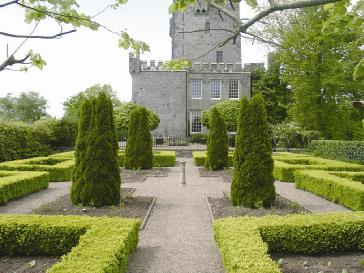
|
| Leamaneigh More | Occupied by Patrick J. Coffey at the time of Griffith's Valuation and held from Sir Edward Fitzgerald. The buildings were valued at £10. During the 1940s this property seems to have been known as Waverley. An extensive farm is extant at the site. | |
| Feenagh House | Feenagh House is described as "in ruins" on the 1st edition Ordnance Survey map and has almost disappeared by the publication of the 25-inch edition in the 1890s. In 1786 Wilson refers to "Fenagh House" as the seat of Mr. Wilson. By the time of Griffith's Valuation, the townland in which it was situated was the subject of Court of Chancery proceedings. Some fragments of the walls are still visible. |

